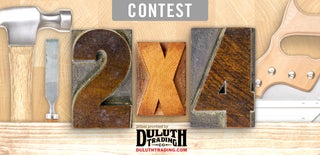Introduction: DIY Lightboard
Hi everyone! We made this project for out Physics 241 course at Estrella Mountain Community College. This was just one of the many projects we decided to build. The idea came from Northwestern University, but decided to build one under a students budget. The original lightboard from Northwestern University costs around 10K to build.... Well we decided to try and build a similar board, but for under $100. This board can be used to make videos of students or teachers explaining lessons and concepts. The idea is to capture the user and their work (would look backwards to the user), and then flip the frame so the audience can see the lecture (now it it can be read by the user).
Step 1: Materials!
Lightboard Materials:
Plexiglas
NEON Expo Markers
Strip of White LED lights
Screws
2x4 three 10ft pieces Wood
Wood screws
Weather Stripping 20ft
Steel Braces, 1inX1/16in thick, 12ft total
10+ bolts 4in long
Weather stripping glue
Tools Recommended:
Router
Dw/ drillbits
Circular Saw
Grinder Wrench
Screw driver philips
Part Modification:
cut 2x4 into 6 pieces: two 6’ and four 4’ pieces
cut steel into 8 17 inch pieces
cut channel in 2x4
Step 2: Building the Frame
We thought it best to make indents in the wood for the Plexiglas to simply slide in. This is also where the LED lights would be fed into as well. The LED lights make a great cushion for the Plexiglas to rest on.
Use two pieces of 2inx4inx10ft wood.
Cut one piece of wood into a 6ft and 4ft, and the other into 6ft 2ft and 2ft.
The two 6ft pieces use as the vertical side pieces, and route a T shape centered, into both pieces of wood starting at the top, the T channel extended 48.25in along the boards.
The 4ft piece is used as the horizontal support and had a T shape channel routes the entire length of the wood
Remove a half inch of wood from one end of the 4ft piece of wood so it would be a bit shorter than the plexiglass.
The two 2ft pieces are perpendicular to the vertical 6ft pieces and act as feet.
Step 3: The Build
We stuck to a simple support stand, as with many boards used in study rooms and tutoring centers. We simply make a "T" shape with the legs, but supported the "T" with the flat steel braces. The steel braces are in the middle of either side of the bottom wood support.
We used a 1inx0.25inx20ft piece of steel and made eight 17in pieces of steel. We used four pieces of steel as braces connecting the two 6ft pieces to the horizontal support. Each 'foot' had two braces connecting it to the vertical beam.
We drilled two holes into each end of each of the eight pieces of steel.
We drilled two tracer holes into each side of lightboard connecting the horizontal piece and the vertical piece (total of 4 tracer holes). To connect the vertical post and the feet we drilled three holes into each end of lightboard (total of six tracer holes on only the outside of the lightboard.
Step 4: Order of Assembly
Fit the plexiglass into the channel of one of the vertical pieces and begin pulling the LED strip through, have the end of the LED strip (the end that does not connect into the wall) flush with the top of the vertical post.
1. Begin pulling the led through the horizontal channel and once done connect the horizontal piece of wood to the plexiglass. 0.25in of glass should be available to connect the remaining vertical piece.
2. Wire the LED strip through the remaining 6ft vertical piece of wood and once done connect the vertical piece to the plexiglass. The LED strip will be hanging from the top of the lightboard, feel free to modify this so that the LED strip does not hang.
3. Use two screws to connect the vertical piece of wood to the horizontal piece of wood and repeat on the other side. (4 screws used)
4. Stand the lightboard up and drill three holes connecting the foot of the lightboard to the vertical post, repeat on the other side (total of 6 screws used)
5. Using a piece of the 8in steel connect the vertical piece of the lightboard to the horizontal piece using a screw, this should form a triangle, repeat on the other side of the same vertical piece. Now repeat the previous step onto the other vertical piece.
6. Connect a steel piece from the foot to the board to the vertical piece both pieces should form a large triangle. Repeat on the other side.
7. You're done with your personal lightboard
Step 5: Camera/ Program/ Etc
We are currently working on trying to figure out what kind of media player to use. If you look at the Northwestern University lightboard, you can see it is pretty advanced. Currently, the lightboard is in a small studio here at school. We have it available for students and mostly teachers. I will get you the information as soon as I know how the media process works. We do the a black backdrop for this board in order for the information on the lightboard to POP! It really does help a lot. We have not discussed lighting, and are currently trying to figure out what are the best lighting methods in order to capture the information on the lightboard and the instructor.

Second Prize in the
Make It Glow! Contest

Runner Up in the
2x4 Contest









